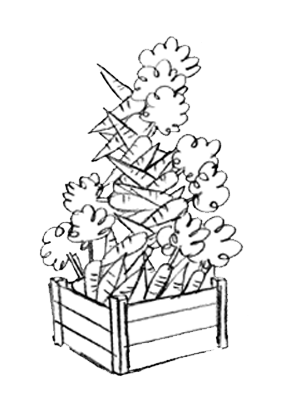We need a metaphor-rich vision for planting “gardens of hope” instead of falling into the trap of fear-based ideologies, as this “trust” path offers a profound way to rethink activism. By moving away from the factory-like, large-scale approaches that dominated much of the 20th century, we can focus on advocating for small, vibrant, community-focused projects that feed not just political outcomes but the spirit and imagination of those involved. This nurturing of hope, rather than a reactionary stance based on fear, can be a powerful antidote to both right-wing and left-wing stagnation.
How to escape the “straitjacket of fear” a first step is recognizing fear-based cycles. This is currently the dominate social path of contemporary politics, both right and left operates on fear. Understanding this cycle and making it more visible is the first step toward composting this mess we live in on the #mainstreaming path. Activist movements as well do fall into reactionary patterns, continuously responding to crises rather than building positive alternatives.
There is a central role for grassroots media: Librarians, historians, and grassroots media makers are essential for documenting, archiving, and telling the stories of hope that are often forgotten. This is critical for escaping the activist memory hole. Curating and sharing the successes of past movements, we provide the building blocks for new projects. The #OMN has a project for this, #makeinghistory, a tool to create open archives, digital networks, and libraries dedicated to past and present activist movements. These archives can focus on what worked and why, so future movements can learn from them.
With these tools we can start to composting failures, particularly those based on fear, which then become the compost that nourishes future projects. Rather than seeing these failures as losses, they become resources that fertilize new growth. A practical step for this is encouraging transparency in activist circles about what didn’t work, and build spaces for reflection and critique.
Gardens instead of factories, a shift from large, impersonal systems to smaller, community-based, human-scale networks and projects. These gardens are not just metaphorical, they represent real, localized efforts to create change to challenge the current mess. Let’s focus on launching many small projects rather than one big, one path. Use tools like the #4opens to encourage unity in this diversity, experimentation at the grassroots level, where communities can grow organically and learn from each other. These “gardens” could be physical spaces, like urban farms or community centers, or they could be digital networks fostering open dialogue and collaboration. We can use technological federation to scale horizontally, as we know this works after the last 5 years of the #fediverse.
The is a core role for storytelling as nourishment, in these gardens, the stories we tell are as important as the physical outcomes. Stories inspire, sustain, and spread hope. Media bees, buzzing around and pollinating, represent the crucial role of communication in activism (#indymediaback). Let’s make storytelling central to every project. Whether through podcasts, blogs, social media, or video, ensure that every small success is documented and shared. This is basic linking to spread a culture of hope.
Pests as balance, just as gardens need a balance of insects and pests, movements need their challenges to stay healthy. This means embracing the struggles and pushback that inevitably comes, without letting them derail the movement. Accept conflict as part of the process. Instead of viewing internal or external challenges as wholly negative, see them as opportunities to strengthen the movement and build its resilience.
Planting 100s of gardens, rather than trying to create one monolithic left-wing solution, advocate for planting hundreds of small projects. This is a native path to build a body of knolage, myths, traditions and lessons about what works and what doesn’t. This decentralized approach aligns with the creation of affinity groups and grassroots organizing. Let’s focus on diversity in both method and scale. Some might be focused on local food production, others on tech solutions, media, or community care. The key is to document and share what works in each context. So we can start to build the common bridges that we need to hold us together during the onrush crises.
This strategy avoids the trap of overwhelming scale that can easily lead to burnout or co-option by #mainstreaming forces. The goal is not domination but the cultivation of many efforts that, collectively, lead to significant change. This approach is more sustainable, more adaptable, and more rooted in human connections and hope.
